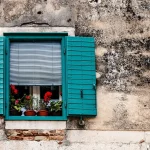Split could lose as many as 38,000 inhabitants in the next 20 years, while the most optimistic reports show that the Dalmatian capital could lose 20,000, meaning the total number of inhabitants would undoubtedly fall below 145,000 – just as Split was in the mid-1970s, reports Slobodna Dalmacija on March 28, 2019.
This shocking result comes for the study “Forecasting Future Needs in Demography, Tourism and Economic Sectors” designed for the Kopilica and East Coast master plan, and is signed by experts from the Zagreb Institute for Development and International Relations.
Ana-Maria Boromisa, the head of the study, visited the Split United showroom and emphasized that by 2040, there would be only around 134,000 citizens in Split if systematic policies and active measures were to be implemented as they have been so far.
During the study, three possible scenarios were taken into consideration – the first where nothing would be done, the second where the available measures are implemented to the maximum, and the third by which all those 13,000 who fled from 2011 to 2017 returned to live in Split.
It should be noted that in 2011, 167,121 residents were listed in the city, which was already 8,000 people less than in 2001, and official estimates by statisticians indicate that figures continue to fall.
The latter scenario is possible, as Boromis said, only if a new “building boom” occurs in the next five years, with 300 new, more affordable flats available on the market every year.
“The number of apartments used to accommodate tourists is increasing by 30%, i.e., families do not live in them in the summer, but usually move to other places where they can live all year round. The opportunity to earn on these is an average of 67 days if the accommodation is filled, which is obviously attractive enough to raise the prices of flats by renters, “ said Boromis, warning that increased housing demand could again lead to rising housing prices and emigration.
In other words, to make the scenario of returnees realistic, it is necessary to change the structure of the economy, limit mass tourism, and change the structure of the accommodation. According to the data presented, the capacities of the Split area from 2010 to 2016 increased by 2.68, but their utilization in 2016 was extremely low, with an occupancy rate of only 20.12 percent.
The number of people per household fell from 3.1 in 2001 to 2.8. On the other hand, the number of tourist arrivals increased by 2.7 times from 2012 to 2017, with overnight stays tripling, and the average length of stay in the city from 2.55 to 2.85 days.
If this trend continues, the Institute predicts that 1.2 million tourists will visit Split, and ten years later this figure would increase to 7.7 million, making it 9.4 million tourists in the city by 2040. This figure of arrivals exceeds the accommodation capacity and projections of the possibilities of its expansion.
“The population structure in Split-Dalmatia County is such that the average age is over 40, indicating that the population is older because the average should be about 35 years. It will take a lot of serious measures to bring people of a younger age back to Split.
In addition to increasing the additional tourist capacity without infrastructure, people who are supposed to work in this industry will collapse. Tourists are coming to experience the local way of life, if it doesn’t disappear, but there is not enough workforce to wait on them,” said Ana-Maria Boromis, who added that they should systematically think and know what is to be achieved to make it equally beneficial for both residents and tourists, and if only a particular interest is to be seen, then not much will be achieved.
The presentation of the study was also accompanied by mayor Andro Krstulović Opara, along with his associates.
“We have heard clear figures based on statistical data and analysis of experts who have once again confirmed that this study and planning development of not only Split but its surroundings are the only possible way to work. So, plan to look at all those scenarios that are ahead of us. I’ve always said that we need to know our goals and where we will be in 5, 10, 15 or 20 years.
The fact is that the number of inhabitants in Split is reduced because of the price of real estate and living conditions,” Krstulović Opara warns, and adds that this number will fall if severe measures are not taken.
“Kopilica needs many apartments, and in the area of today’s ‘Promet’ garage, we want POS apartments to be rented, exactly what young couples are looking for today. First, it is necessary to proceed with the modification of the spatial planning documentation and the amendments of GUP, and the DPU, which is a big job that will last for the next few years. The master plan is in discussion and we expect the contribution of experts and interested public so that we can adopt it by June,” Krstulović Opara concluded.
To read more about lifestyle in Croatia, follow TCN’s dedicated page.











